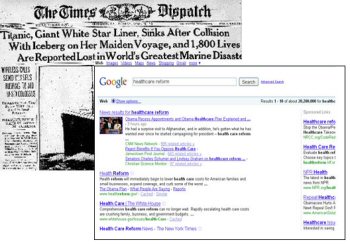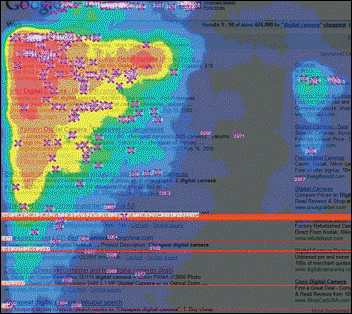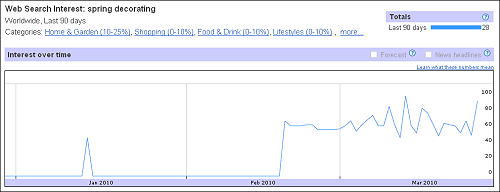 We’re starting this Spring Break week off with a very rare guest post. Jiyan Wei is Director of Product Management at Vocus, Inc. where he drives product platform strategy and roadmap execution for PRWeb. I’ve presented on panels with Jiyan several times at search marketing conferences, talking about the virtues of search, social media and public relations, finding him to be a very strategic and smart marketer. We’ll be co-presenting at the upcoming MarketingProfs B2B Forum in May on Content Optimization and Marketing.
We’re starting this Spring Break week off with a very rare guest post. Jiyan Wei is Director of Product Management at Vocus, Inc. where he drives product platform strategy and roadmap execution for PRWeb. I’ve presented on panels with Jiyan several times at search marketing conferences, talking about the virtues of search, social media and public relations, finding him to be a very strategic and smart marketer. We’ll be co-presenting at the upcoming MarketingProfs B2B Forum in May on Content Optimization and Marketing.
In this post, Jiyan discusses the progression and importance of news content in blended search:
Once upon a time, Page 1 had a special meaning for PR practitioners and business owners alike.
It meant that for one day, they had received the pole position in the consciousness of the consumer, who would hopefully transition from newspaper consumer into business customer. For businesses – both local and global alike – Page 1 either meant an outpouring of business or pending doom.
With the emergence of search as ubiquitous, Page 1 has begun to take on added meaning. Business owners are still very concerned about Page 1 but now, depending on whom you ask, Page 1 often refers to search and the consequent generation of a limitless stream of business and leads without having to pay for ongoing PR or advertising.

For many, Page 1 in search has become the new holy grail of business owners and SEO practitioners alike.
When I’m asked the question, “Will PRWeb get us onto Page 1 of search,” I immediately start shaking my head vigorously while hoping no one from the major engines overheard the question.
Of course, nothing can guarantee you will be on Page 1 of search. That being said, as part of a broader online marketing strategy, news releases can be an effective tool to facilitate the outward expression of news and information about a business, which over time can result in the creation of online authority in the eyes of search engines.
Yet with blended search, the picture becomes muddled.
At some point in the last couple years, Google (and now Bing) decided that users want more than just Web results when they run a query in search and so started offering a front page that contained a broader array of types of content including images, video and news.
According to some accounts news performs better in blended results than other forms of media and unlike other forms of media in blended search, news has a distinctly temporal slant. After all, news is really just information with a timestamp.
What this means for business owners, communicators, marketers, etc. is that under some circumstances, news can actually be a viable gateway onto Page 1 of search in a relatively short amount of time by leveraging sites that search engines regard as ‘news sites,’ including news release sites.
All that being said, here are some specific observations we’ve made about news in blended search:
1. If a recent news story is relevant to a query, it is more likely to appear somewhere in the results
This may seem fairly obvious but the devil is in the details. Nailing down ‘relevance’ between a query and results is a tall order but we have found that placing your target keywords in the title, preferably in the first part of the title of your news story, dramatically increase the likelihood that your news story will show up for queries of the target keywords once the crawlers have found the story. As the keywords descend into the story, from left-to-right and top-to-bottom, they become less impactful in terms of helping your story get onto the blended results for your target query.
2. News results can include thumbnailed images and these can improve click-through rates
Crawlers like Google look for relevant images to place in connection with news stories in the news block in blended search. They normally extract images from within the body of the story so including these images can result in having a thumbnail placed in connection with the result.
Who cares?
Well, everyone has seen the heat maps that show the importance of receiving top billing on page 1.

What we’ve found from our own internal tests however is that results with image thumbnails can have click-through rates that are similar and sometimes even higher than results that are actually located higher.
In other words, reader’s eyes are naturally drawn to the thumbnail so even if the news block is located lower down on the blended results page, the inclusion of a thumbnail can mitigate the lower placement to a great extent.
3. Many types of queries can result in news
There are some types of queries that seem to have an obvious time slant: current events, sports, celebrities, etc. However, we have seen news show up in blended search results for query types that seem less obviously tied to a date.
For example, tip sheets and best practice documents can be easily turned into news stories that can have a presence in blended search and drive traffic. With Spring right around the corner, there is a great opportunity to leverage audience demand for content to drive Web site traffic.
For example, a quick glance at Google insights reveals that queries for ‘Spring decorating’ are on the rise.

An opportunistic interior designer could use the opportunity to submit a release with a title like ‘Spring decorating tips from leading interior designer,’ that will have a good chance to tap into an upwards trending query in the blended search results.
4. Individual stories don’t appear in blended search results for long
Using your news to get Page 1 placement is a short-term proposition. As quickly as the story enters the blended search results, it can disappear. We typically see news stories show up in the blended search results for 24-48 hours. Depending on how dynamic the news landscape is for the query (some queries are going to receive a flood of news stories that may wash your story away in hours), the lifespan of your story may be even shorter.


